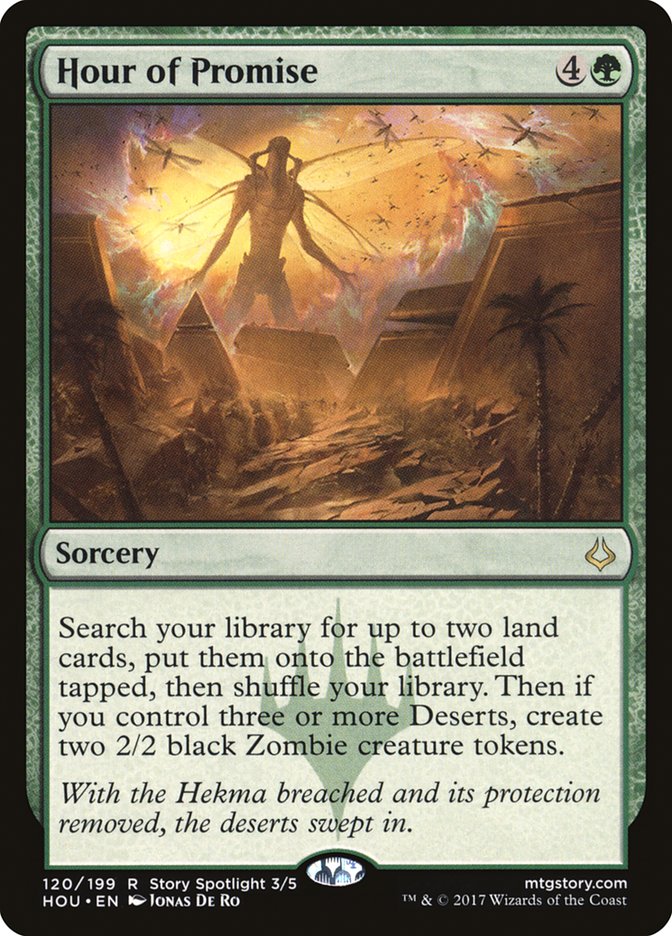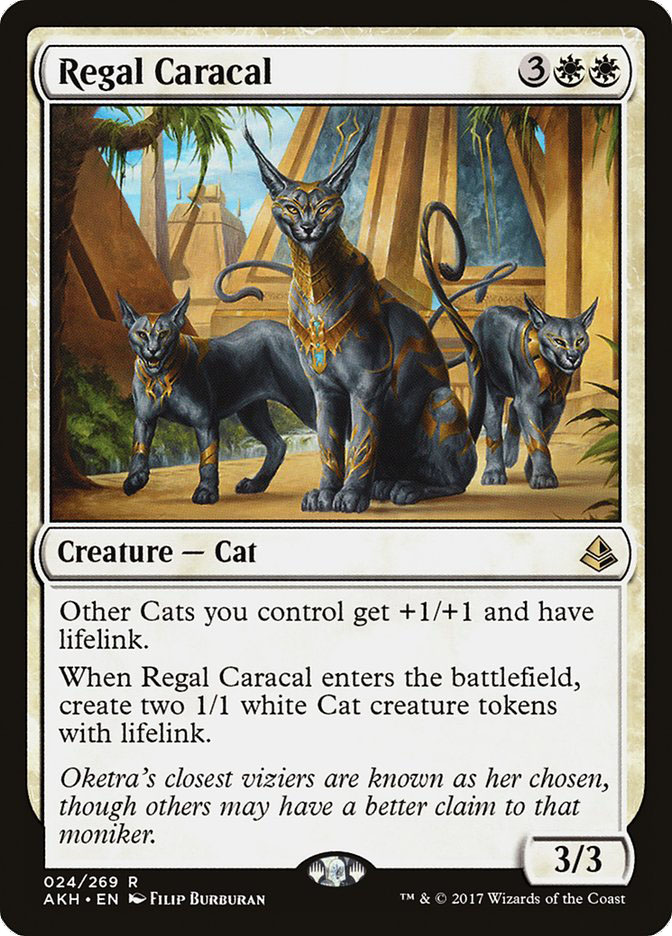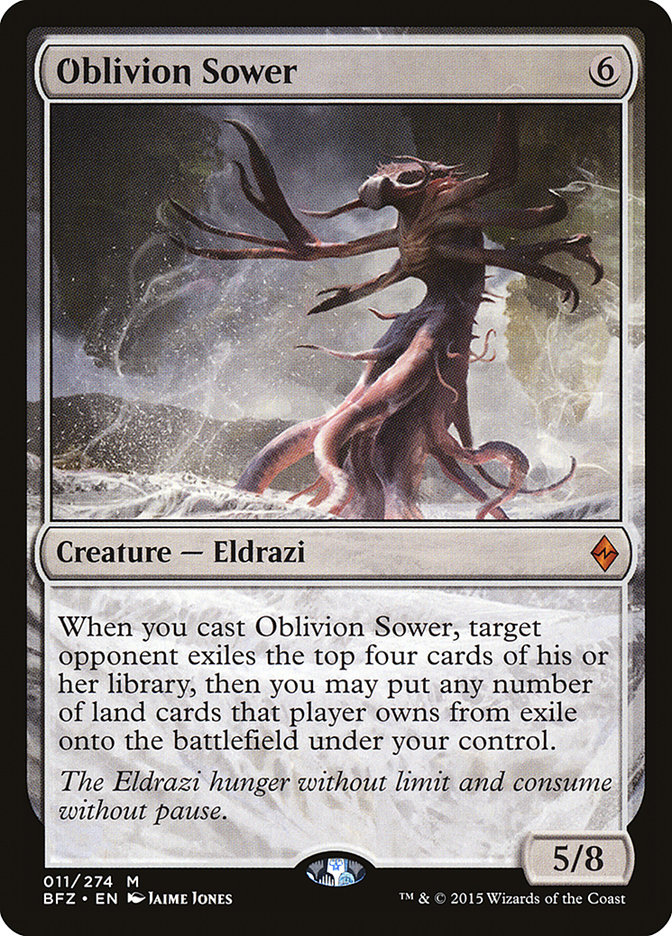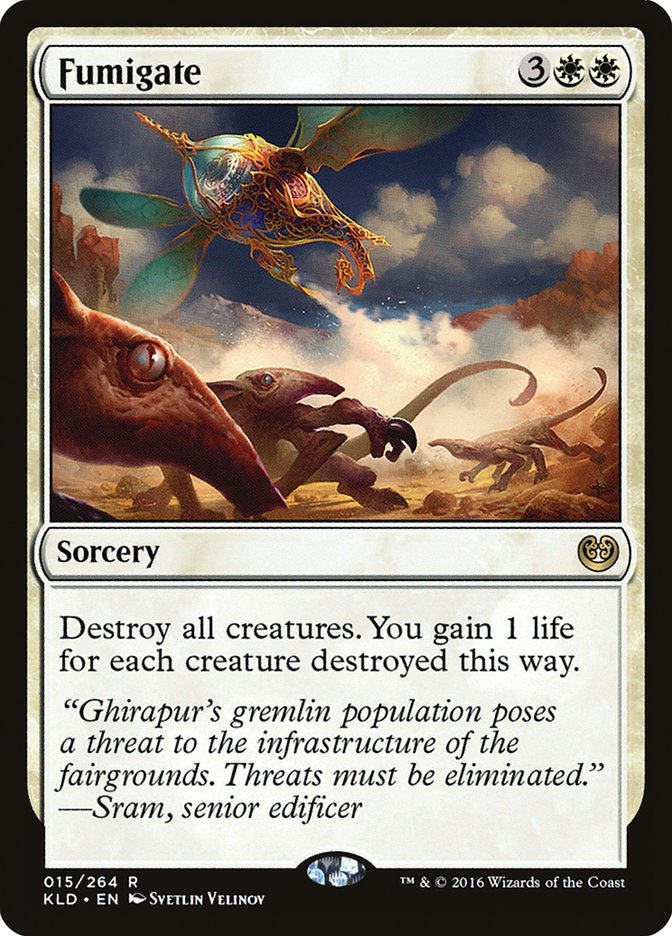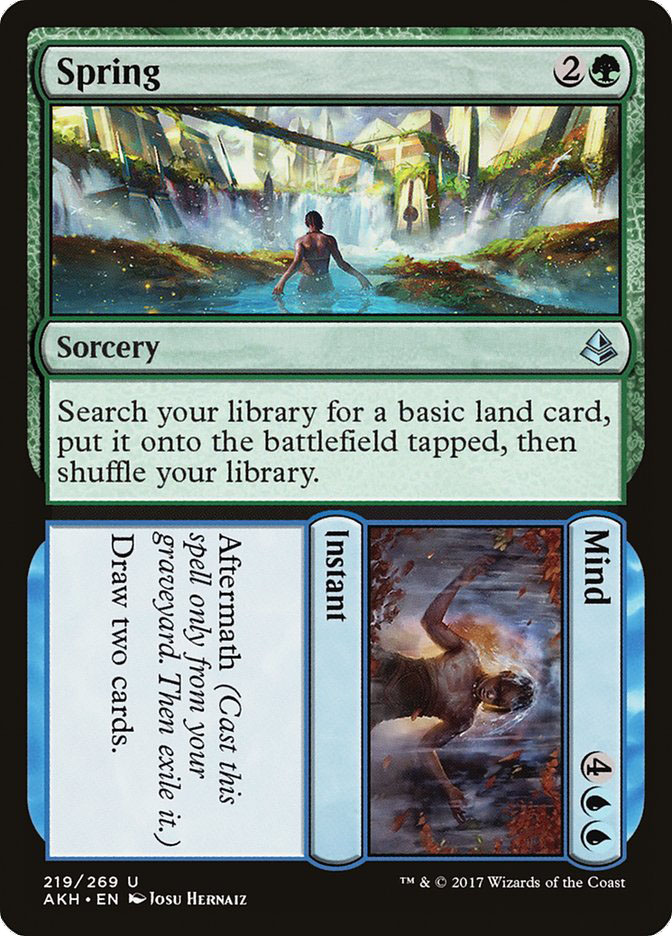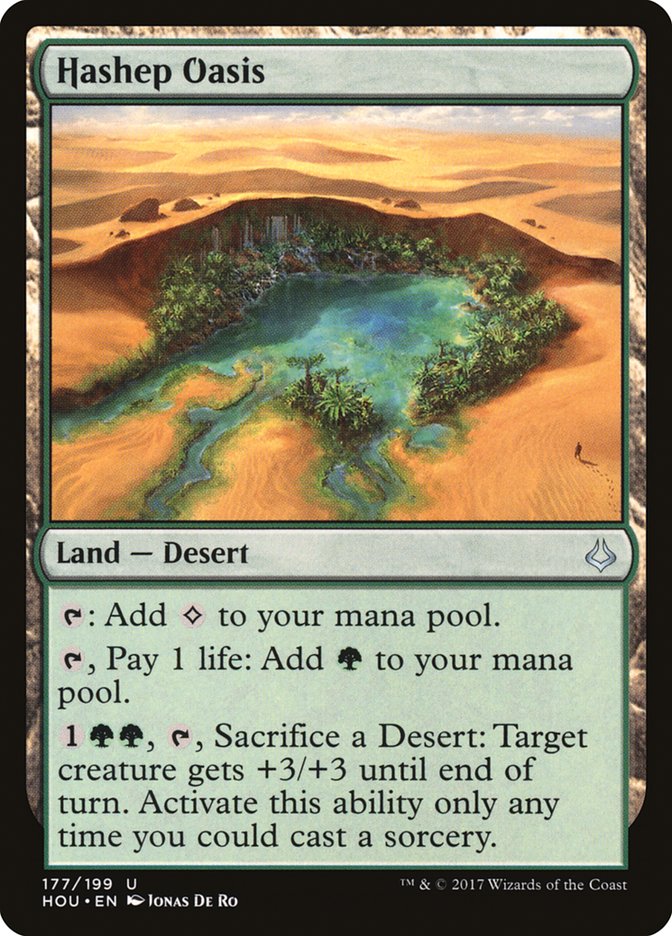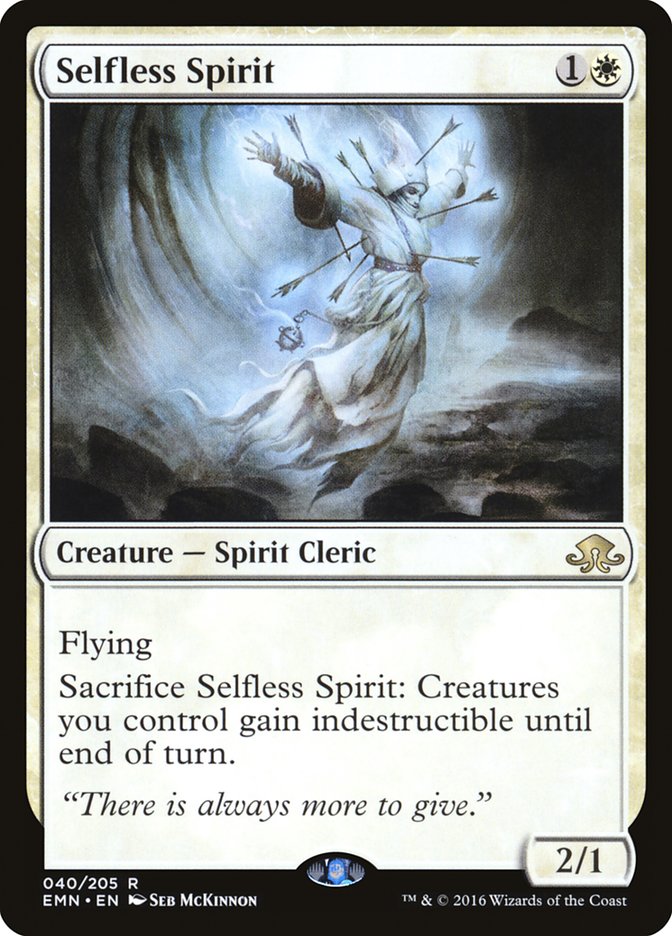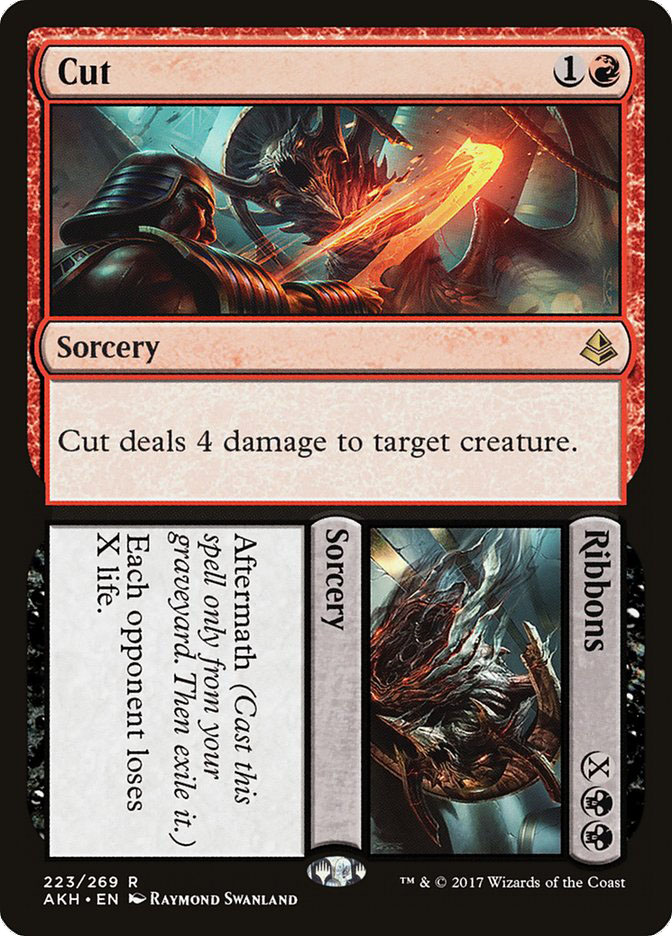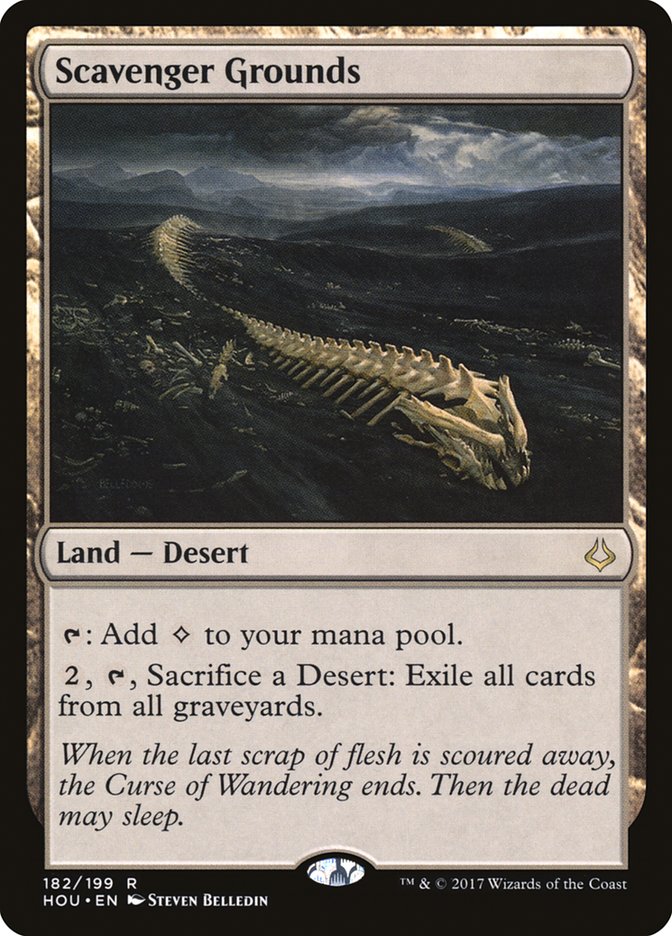Hi everyone! For those of you who don’t know me, I’m Collins Mullen. I’ve
been playing competitive Magic for the past three years or so, mostly on
the SCG Tour. This past weekend, though, I placed second at Grand Prix
Washington DC with a slightly unusual…well, this:
Creatures (13)
- 3 Ulamog, the Ceaseless Hunger
- 3 World Breaker
- 1 Linvala, the Preserver
- 4 Thraben Inspector
- 2 Walking Ballista
Lands (26)
Spells (21)

Going into this tournament, the Standard format was definitely mature, with
a pretty clear metagame that had developed over the past month or so.
Basically, midrange decks had risen to the top of the heap, with Temur
Energy being Enemy Number One. I’m very fortunate to be on Team Lotus Box
for testing; we’re always looking for unique and powerful ways of
approaching a defined format. My teammate Ralph Batesh had just won an
invite to the Pro Tour at his RPTQ playing G/R Ramp and was very high on
the deck for this format. Zan Syed, Jon Rosum, and I were all testing it as
well, and seeing pretty good results. The deck also ran a playset of Hour
of Promise, and if my recent experience in Modern has taught me anything,
it’s that I can’t really pass up an opportunity to play that card.
Ramping into Ulamogs proved to be quite successful against the decks filled
with removal and medium-sized creatures. The matchup that gave us the most
trouble was Ramunap Red, a serious issue because we expected to face a
significant amount of it in DC. Around that time, I caught wind that some
folks were having success with a white version of the ramp deck, and it
looked very (Hour of) promising. Nothing in my experience was really tying
me to red in the ramp shell, so white seemed like a perfectly reasonable
alternative because it gave us so many good card options against Ramunap
Red.
The beginning:
Creatures (12)
Planeswalkers (2)
Lands (19)
Spells (27)

I played the G/W version of ramp through a couple of Magic Online Leagues
and it felt very powerful. I was crushing pretty much everything I
played against…except that all of a sudden I was losing to Temur, which was
supposed to be a good matchup! Game 1 would go according to plan most of
the time; I could resolve a sweeper and then close the game out with a
payoff spell. Post-sideboard, however, the story was different. My opponent
would get ahead on the battlefield and then hold up Negate for the rest of
the game, stopping me from being able to resolve a sweeper on a crucial
turn or Hour of Promise for some chump blockers and the ability to cast
Ulamog.
Given our sideboard at the time, the plan against Temur was to bring in the
Tireless Trackers, Regal Caracals, and Thought-Knot Seers as something to
do when our opponent held up negate, but these cards just weren’t
high-impact enough most of the time. We needed something bigger.
Unfortunately, I headed to the tournament without coming up with a solution
I was comfortable with. But on the drive up to DC from my hometown of
Durham, NC, we stopped at a rest stop and something caught my eye. I knew
it was a sign, and immediately sent it to my team.
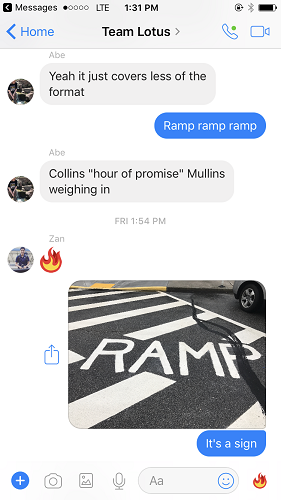
Upon arriving at the event site, I ran into my friend Zachary Kiihne, and
we sat down to playtest some GW Ramp vs. Ramunap Red. During this testing
session, Zach made an offhand comment that I would never have succeeded at
this tournament without:
“Have you tried Oblivion Sowers out for Temur?”
This was the piece I was missing! A card with immunity to Negate and
Invasive Surgery was exactly what the doctor ordered, and the arbitrarily
large toughness made it a real headache for Temur to attack through. The
card also got me closer to casting Ulamog. I immediately combed the vendors
for Oblivion Sowers.
I tuned up the list and settled on what I ended up registering for the
Grand Prix.
Creatures (13)
- 3 Ulamog, the Ceaseless Hunger
- 3 World Breaker
- 1 Linvala, the Preserver
- 4 Thraben Inspector
- 2 Walking Ballista
Lands (26)
Spells (21)

I ended up going down to two Walking Ballista and up to three World
Breakers in the maindeck because I knew that I really wanted access to four
World Breakers for the mirror and Walking Ballista had underperformed for
me in testing. I also went up to 26 lands, because during testing 25 felt
just a little low. The deck is extremely mana hungry and dependent on
making the first four natural land drops to function. It’s pretty miserable
to miss your fourth land drop and miss out on casting Fumigate or Hour of
Promise. If you miss on your turn 4 payoff spell, the value of the work you
put in ramping falls off a cliff.
I felt very confident in my sideboard plans for the two major matchups that
I expected to make up the majority of tournament.
Temur Energy
Out:
In:
The main problem in my testing against Temur was Negate, so this sideboard
plan was designed to turn that play pattern to my advantage. My opponents
would still play off-curve to hold up Negate after turn 3, but this time I
would be ready with either a Regal Caracal to buy me a bunch of time and
clog up the battlefield, or else an Oblivion Sower to put down a massive
blocker and ramp me to my larger payoff spells.
This plan ended up working like a charm. I played against Temur eight times over the tournament and didn’t drop a match. None of
the matches felt particularly close, either. As long as I was able to make
my land drops and cast my spells, my opponent felt woefully outmatched. The
moment that really summed up this matchup was when my opponent cast
Chandra, Flamecaller, sighed, used the zero ability, and discarded two
Negates. A reminder: he had sideboarded those Negates in for the
matchup. I had three 5/8s already on the battlefield. I felt like I had
cracked the code.
Ramunap Red
Out:
In:
This plan looks a little strange because I’m taking out all of the top-end
of my deck. The deck actually transforms into more of a turbo Caracal /
Linvala deck than anything else, as I found that, after casting a sweeper,
those cards were pretty effective at taking over the game and winning on
their own. The matchup against Ramunap Red was actively terrible Game 1,
which is why there were so many sideboard slots for the matchup.
Post-sideboard I felt like a favorite, though, so I was happy with my plan
here.
The tournament itself went about as smoothly as I could have asked for. I
started out 8-0 and lost in the last round of Day 1 to Sarah Zyla on
Mono-Black Zombies. I felt pretty favored in the matchup, but Sarah was
able to steal Game 1 with an aggressive draw that killed me before I could
find a sweeper. After winning Game 2, we played a pretty close Game 3 where
I was able to deal with her battlefield at a low life total but still
needed to find a payoff spell to win the game. Sarah had two Dread
Wanderers that were threatening to kill me in short order, so I knew I
would have to use my Fumigate and then activate my Scavenger Grounds to
deal with them for good.
I ended up throwing away two cards, however, when I decided to cast my
Spring // Mind the turn before I planned to Fumigate and Scavenger Grounds.
Had I held my Spring // Mind until the next turn, I would have been able to
draw two cards and dig closer to a payoff spell. As it happened, I had to
exile my Spring // Mind in my graveyard, and Sarah drew enough pressure to
kill me before I could find my Ulamog.
Day 2 also went relatively smoothly, with multiple Temur and Zombies
opponents. I was, however, introduced to my bad matchup on Day 2: Mardu
Vehicles. I played against it twice in the Swiss on Day 2 and felt very
lucky to defeat it both times. It was definitely a matchup I didn’t feel as
prepared for, and it was very resilient to the ways I was trying to combat
the decks of the format. It could still apply pressure through my sweepers
and had a very fast clock. But Regal Caracal and Linvala definitely carried
their weight for me, and suddenly I found myself on top of the standings.
I was 13-1 going into the last round of Swiss and had just locked up my
first Pro Tour Invite. It didn’t really sink in for me immediately as I
shook my opponent’s hand and wished him good luck in the last round, as he
still had the opportunity to win and Top 8. It all came flooding in,
however, as all of my friends rushed over to congratulate me. Soon enough I
was celebrating with a victory burger.
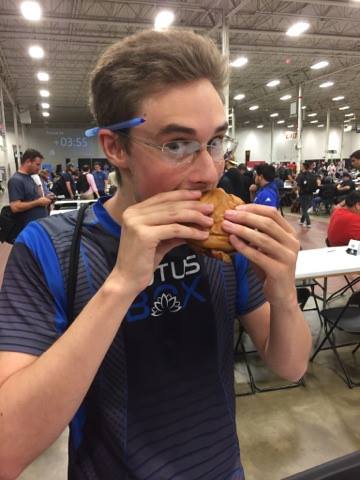
There’s one decision outside of gameplay and deck construction that I’d
like to talk about a little. In Round 15, I was one of only two players at
13-1 in the tournament. Because we had already played each other, I knew I
wouldn’t be facing the other 13-1, and would instead be paired down to a
12-2 who had to win in order to make Top 8. With full knowledge that I
would still be locked for Top 8 with a loss, I decided not to concede and
play out the match as normal.
I made this choice for three reasons. The first and most important was
because, as the standings currently stood, if I conceded, there would be
one 13-2 player who would get ninth on tiebreakers. I had no risk of being
that player, but my friend and teammate Dylan Donegan was sitting at 12-2
with the worst tiebreakers. If I lost and he won, he would make ninth. If I
won and sent my opponent to 12-3, there would be a spot open in Top 8 for
Dylan.
The second reason for playing the match out was that I knew my opponent was
on Ramunap Red, and I considered that to be a relatively unfavorable
matchup for me, even with my sideboard plan. If my goal is to win the
tournament (which it was, in case that’s unclear), I have a shot at keeping
my opponent from being in the Top 8 and not having to face him in the
elimination rounds.
The third reason to play was that if I won, I would be guaranteed first or
second seed, which would allow me to be on the play for the majority of the
Top 8. With the possibility of multiple Ramunap Red decks making the Top 8,
I wanted as many games on the play as I could get. As it happened, I
defeated my opponent and moved into the Top 8 at the second seed.
My quarterfinals matchup was against Temur Energy, and I was able to
quickly dispatch my opponent in two games. I was able to close out Game 2
in style, attacking with Ulamog, exiling 20 cards, and then putting ten
lands onto the battlefield with a post-combat Oblivion Sower and casting
Linvala. My opponent was then able to generate enough energy to steal my
Ulamog on his next turn with a Confiscation Coup, but I had lethal in the
air with Linvala and two activations of Hashep Oasis.
In the semifinals, I faced against Corey Baumeister, who’s on a seemingly
unstoppable streak in Standard Grand Prix. He was playing a relatively new
deck in Mono-White Eldrazi, and I was pretty unsure how good of a matchup I
had against him. He had maindeck Warping Wails, which I was pretty
concerned about, plus Thought-Knot Seers to disrupt my hand. His deck also
played Archangel Avacyn and Selfless Spirit to counter my Fumigate plan.
I decided to enact my anti-Negate sideboard plan to get around his Warping
Wails because I figured my larger creatures would be difficult for him to
deal with. That’s exactly what happened Game 2, as I was able to become the
aggressor with my Oblivion Sowers after Corey stumbled on making land drops
early. The game lasted quite a while when he flipped an Eldrazi Displacer
over to a Matter Reshaper trigger, and he was able to hold off my horde of
5/8s and 5/7s, but eventually I drew enough gas to where he couldn’t keep
up any more. Before I knew it, I found myself in the finals.
Waiting for me in the finals was possibly the worst matchup for me at the
tournament, and in the hands of easily one of the best players there: Matt
Severa. Not only did I already consider Mardu a bad matchup, but Matt’s
innovation of Thought-Knot Seers in the maindeck put me at a severe
disadvantage. I somehow won Game 1 after playing pretty loosely and
ignoring a clear out that Matt had in an aftermathed Cut // Ribbons. Giving
your opponent the opportunity to topdeck a black source and kill you when
you’ve essentially locked up the game and have a Scavenger Grounds in play
really isn’t where you want to be.
Mistakes like this are bound to happen, and I definitely made my fair share
in this tournament. It’s easy to look back on those mistakes and beat
yourself up about them, but I think it’s also important to recognize that
no one is perfect and everyone is bound to trip up and miss something every
once in a while.
I was handily dispatched in the final two games of the tournament and had
to settle for a second-place finish.
I definitely learned a lot from this tournament. It really highlighted the
importance of having a solid gameplan in Magic, understanding the role you
need to play, and understanding the gameplan that your opponent is
attempting to enact in each game. I feel like if you are able to understand
all of these things, you can use that information to give yourself a
significant advantage.
I actually chat a lot about this concept (as well as the tournament!) with
my cohost on this week’s episode of my podcast, the MTG Grindcast. If you’d
like to hear more from me, definitely give it a shot. You can find it on
Twitter at @MTG_Grindcast,
and our latest episode is
here.
Feel free to ask us questions if you’ve got any!


